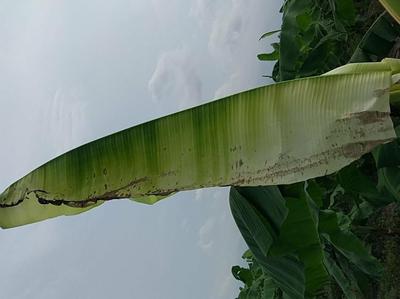Manganese Deficiency
Manganese Deficiency
Deficiency
In a Nutshell
- Mottled, diffuse, pale green to yellow interveinal chlorosis on young leaves.
- Small necrotic lesions develop on the chlorotic areas.
- If not amended, brown necrotic spots may appear on the leaf surface, and severely affected leaves turn brown and wither.
Can also be found in
Symptoms
Symptoms are less dramatic than other nutrient deficiencies and depend greatly on the crop in question. The veins of middle and upper (young) leaves of manganese-deficient plants remain green while the rest of the leaf blade first becomes pale green, then develops a mottled pattern with pale green to yellow areas (interveinal chlorosis). Over time, small necrotic lesions develop on the chlorotic tissues, particularly near the margins and tips (tip burn). Reduced leaf size, deformation and curling of leaf margins are other possible symptoms. If not amended, brown necrotic spots may develop on the leaf surfaces, and severely affected leaves turn brown and wither. Not to be confused with Magnesium deficiency, whose symptoms are similar but develop first on older leaves.
Recommendations

Organic Control
Use manure, organic mulches or compost to balance the nutrient content and the pH of the soils. These contain organic matter that increases the humus content of the soil and its water-holding capacity and decrease slightly the pH.

Chemical Control
- Use a fertilizer containing manganese (Mn).
- Example: Manganese sulfate (Mn 30.5%) is commonly used for soil and foliar applications.
- Consult your agricultural advisor to know the best product and dosage for your soil and crop.
Further recommendations:
- It is recommended to do a soil test before the start of the cropping season to optimize your crop production.
What caused it?
Manganese (Mn) deficiency is a widespread problem, most often occurring in sandy soils, organic soils with a pH above 6 and heavily weathered, tropical soils. In contrast, highly-acidic soils increase the availability of this nutrient. Excessive or unbalanced use of fertilizers may also result in some micronutrients competing with each other to become available to the plant. Mn has an important role in photosynthesis and nitrate assimilation. Like iron, boron and calcium, manganese is immobile within the plant, accumulating mostly in the lower leaves. This explains why the symptoms develop first on young leaves. Crops showing a high susceptibility to Mn deficiency and a positive response to fertilization with this nutrient are: cereals, legumes, stone fruits, palm crops, citrus, sugar beets and canola, among others.
Preventive Measures
- Check the pH of the soil and adjust if necessary to get the optimal range for best absorption of the nutrients.
- Plan a good drainage of fields and do not over-water the crop.
- Use organic mulch to keep soil moisture stable.
- Always keep in mind that only a balanced fertilization can lead to optimal plant health and increased yield.



